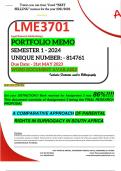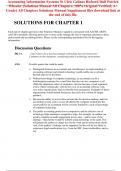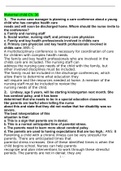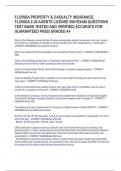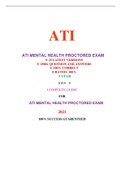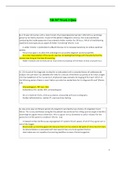Exam (elaborations)
NU371 HESI Case Study: PVD with Amputation NU371 HESI Case Study: Peripheral Vascular Disease (PVD) with Amputation (week 4) Questions With Complete Solutions
- Course
- Institution
NU371 HESI Case Study: PVD with Amputation NU371 HESI Case Study: Peripheral Vascular Disease (PVD) with Amputation (week 4) Questions With Complete Solutions
[Show more]





